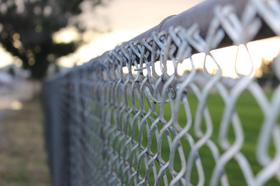For the 2025-26 school year, there are 2 public middle schools serving 338 students in Vandercook Lake School District. This district's average middle testing ranking is 2/10, which is in the bottom 50% of public middle schools in Michigan.
Public Middle Schools in Vandercook Lake School District have an average math proficiency score of 13% (versus the Michigan public middle school average of 31%), and reading proficiency score of 25% (versus the 44% statewide average).
Minority enrollment is 22% of the student body (majority Hispanic and Black), which is less than the Michigan public middle school average of 42% (majority Black).
Overview
This School District
This State (MI)
# Schools
3 Schools
1,349 Schools
# Students
698 Students
537,315 Students
# Teachers
40 Teachers
31,652 Teachers
Student-Teacher Ratio
16:1
16:1
Student By Grade
District Rank
Vandercook Lake School District, which is ranked within the bottom 50% of all 846 school districts in Michigan (based off of combined math and reading proficiency testing data) for the 2022-2023 school year.
The school district's graduation rate of 30% has decreased from 75-79% over five school years.
Overall District Rank
#700 out of 862 school districts
(Bottom 50%)
(Bottom 50%)
Math Test Scores (% Proficient)
15%
35%
Reading/Language Arts Test Scores (% Proficient)
22%
45%
Science Test Scores (% Proficient)
20-24%
38%
Graduation Rate
30%
81%
Students by Ethnicity:
Diversity Score
0.39
0.60
% American Indian
n/a
1%
% Asian
n/a
4%
% Hispanic
5%
9%
% Black
5%
23%
% White
77%
58%
% Hawaiian
n/a
n/a
% Two or more races
13%
5%
All Ethnic Groups
District Revenue and Spending
The revenue/student of $16,986 in this school district is less than the state median of $18,510. The school district revenue/student has grown by 15% over four school years.
The school district's spending/student of $14,057 is less than the state median of $17,693. The school district spending/student has grown by 15% over four school years.
Total Revenue
$12 MM
$25,476 MM
Spending
$10 MM
$24,351 MM
Revenue / Student
$16,986
$18,510
Spending / Student
$14,057
$17,693
Best Vandercook Lake School District Public Middle Schools (2025-26)
School
(Math and Reading Proficiency)
(Math and Reading Proficiency)
Location
Quick Facts
Rank: #11.
Vandercook Lake Virtual Academy
Alternative School
(Math: ≤20% | Reading: <50%)
Rank:
Rank:
5/
Bottom 50%10
1000 E Golf Ave
Jackson, MI 49203
(517) 782-9044
Jackson, MI 49203
(517) 782-9044
Gr: 1-12 | 44 students Minority enrollment: 14%
Rank: #22.
Vandercook Lake High School
(Math: 10-14% | Reading: 20-24%)
Rank:
Rank:
2/
Bottom 50%10
1000 E Golf Ave
Jackson, MI 49203
(517) 782-8167
Jackson, MI 49203
(517) 782-8167
Gr: 7-12 | 294 students Student-teacher ratio: 16:1 Minority enrollment: 23%
Recent Articles

School Choice vs. Neighborhood Schools: Key Factors
Explore school choice vs. neighborhood schools in 2025. Learn key factors parents should weigh when deciding the best fit for their child.

Best School Match 2025: Public vs Charter vs Magnet
Compare 2025 public, charter, and magnet school options with updated data, trends, and strategies to find the best fit.

Public School Boundaries and Equity in 2025
Explore how public school boundaries shape access, equity, and opportunity for students in 2025. Learn the impact on families and education policy.





